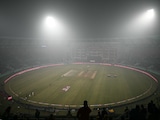Space junk, or space debris, is a growing problem that poses a global threat to space exploration and human safety. Space junk is basically any machinery or debris left in space by humans. Items range in size from large objects such as failed or dead satellites to tiny objects such as paint flecks and nuts and bolts. Most space junk travels at speeds of 18,000 miles per hour, according to US space agency NASA, and the population of debris larger than 1 centimetre in size is approximately 1 million.
Now, with increasing activity in space, space junk poses a growing challenge to space travel and exploration. It also poses an increasing threat of falling back on Earth. So, it is important to understand what is space junk, where to find it, and what kind of problems it presents.
What is space junk?
Formally known as orbital debris, space junk refers to the leftover components of the space system that are no longer required. It might be a satellite that has reached the end of its life or parts of a rocket system that have fulfilled their purpose and are discarded.
According to the Federation of American Scientists (FAS), there may be as many as 170 million pieces of debris in orbit, with the vast majority too small to track due to limits in current technology. Of the 55,000 pieces of debris that we can track, more than 27,000 objects, like spent rocket boosters, active satellites, and dead satellites, are monitored by the Department of Defense's global Space Surveillance Network (SSN).
Separately, since the beginning of space exploration in 1957, the North American Aerospace Defence Command (NORAD) has collected data on space debris. It tracked Russia's first satellite, Sputnik, which launched the same year. Since then, NASA, the United Nations Office for Outer Space Affairs and the European Space Agency have also tracked thousands of objects orbiting Earth.
Where do we find space junk?
Although we don't see space junk in the sky, beyond the clouds and further than the eye can see, it enters low Earth orbit (LEO) - an orbital space junkyard. According to NASA, there are many reasons why LEO has developed into an orbital graveyard. For instance, the deliberate destruction of the Chinese Fengyun-1C spacecraft in 2007 and the accidental collision of an American and a Russian spacecraft in 2009 alone have increased the large orbital debris population in LEO by approximately 70%, posing greater collision risks for spacecraft operating in low Earth orbit.
Notably, there are no international space laws to clean up debris in LEO. So, LEO is now viewed as the world's largest garbage dump, as per the American space agency.
How does junk get into space?
Countries that launch objects into space contribute to debris. Sometimes debris ends up in space because of a rocket launch or because no one bothered to bring down a decommissioned satellite. Other space junk gets there because of an accident.
Since space exploration began, more than 15,000 satellites have been launched. Now rocket launches take place more than three times per week, many deploying multiple satellites. And every new launch has the potential to generate more junk.
Why is space junk dangerous?
There are millions of debris fragments larger than 0.04 inches in size and about 23,000 particles larger than 4 inches in orbit. Debris can travel at 18,000 mph, according to NASA. That's 10 times faster than the speed of a bullet, so even a tiny paint chip can rupture a spacesuit or damage delicate solar arrays and electronics on a satellite.
Future and current missions can be at risk of debris strikes as well. There are drawbacks to manoeuvring a satellite to avoid space junk: the satellite may end up in a less efficient orbit.
For instance, in 2021, the International Space Station was damaged when a two-inch piece of space junk struck one of its components. In 2015, astronauts on the ISS also had to evacuate to a space capsule after being warned of junk coming toward them. That incident was, fortunately, a near miss, but as the debris count increases, so does the possibility of future collisions.
As for humans living on Earth, as far as we know only one person has ever been hit by space junk. According to the BBC, Lottie Williams, a resident of Tulsa in Oklahoma, US, was struck harmlessly in the shoulder by a piece in 1997. It was about the size of her hand and thought to have come from a Delta II rocket. She picked it up, took it home and reported it to authorities the next day.
However, with more and more objects going into space, and coming down, the chances of someone or something being struck are increasing. According to the European Space Agency (ESA), your risk of being injured by falling space debris is less than 1 in 100 billion. Your chances of being hit by a falling satellite are 65,000 times lower than the risk of being struck by lightning and three times lower than the risk of being struck by a meteorite, ESA says.
Can space junk be removed from space?
Junk can remain in space for decades, centuries, or even millennia, depending on how close it is to Earth. Space junk in very low Earth orbit will reenter the atmosphere on its own in a relatively short time. Junk in higher orbits may remain in space indefinitely.
Reducing junk from space is a challenge, but there are a couple of options. Enhanced government and commercial tracking systems will contribute to the solution, but better information sharing among satellite operators will also be needed. Minimizing debris growth will also be critical to maintaining the space environment. This can be achieved through a combination of regulation, voluntary actions, and international agreements.
Even more challenging is organizing nations and entities to clean up space. It's currently unclear who will pay to clean up the space.















